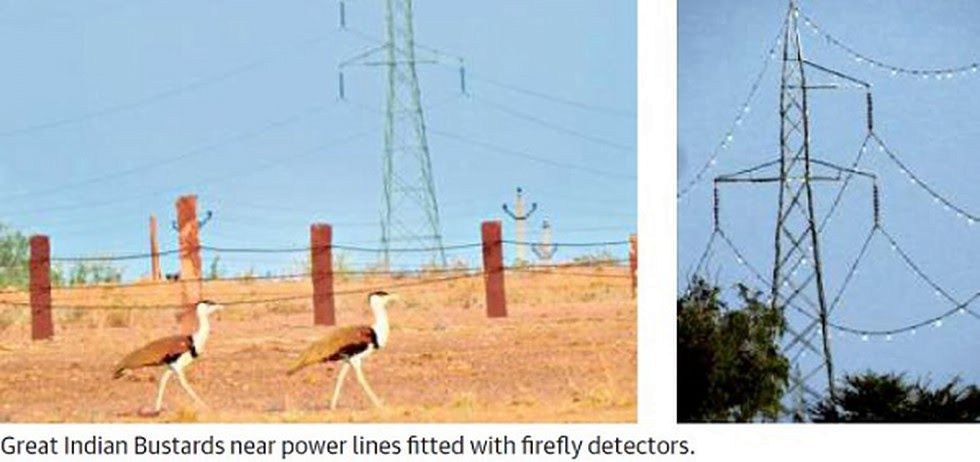UPSC Articles
Firefly bird diverters for Great Indian Bustards
Part of: GS Prelims and GS-III – Environment; Biodiversity
In news
- The Ministry of Environment along with the Wildlife Conservation Society, India, has come up with a unique initiative — a “firefly bird diverter” for overhead power lines in areas where Great Indian Bustard (GIB) populations are found in the wild.

Key takeaways
- The GIB is one of the most critically threatened species in India, with fewer than 150 birds left in the wild.
- It is listed as Critically Endangered in IUCN Red List.
- A 2019 report by the Environment Ministry pointed out that power lines, especially high-voltage transmission lines with multiple overhead wires, are the most important current threat for GIBs in the Thar region, and are causing unsustainably high mortality in about 15% of their population.
Do you know?
- Firefly bird diverters are flaps installed on power lines. They work as reflectors for bird species like the GIB.
- Birds can spot them from a distance of about 50 metres and change their path of flight to avoid collision with power lines.
- The diverters are called fireflies because they look like fireflies from a distance, shining on power lines in the night.













